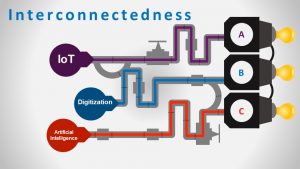
It’s been 25 years since I published the first edition of The Product Manager’s Handbook (now in its 4th edition).
A lot has changed during that time. Product management has become more mainstream (even though role discrepancies still exist). Technical product management has exploded. Unprecedented information is available from books, seminars and online sources.
But a lot has stayed the same. Product managers still face a major dilemma of matrix management: influencing without authority. There continues to be confusion about the differences between product managers, project managers, and product owners. I keep reading articles and blogs suggesting that product managers must become business and customer advocates, beyond being product activists. (That’s been a common refrain as long as I can remember!)
Beyond that, here are a few trends product managers should pay attention to during the 2020s.
3D Printing
Product managers should explore how to incorporate 3D printing into their strategies and tactics. Two primary applications are mass customization and faster innovation.

Mass customization
Wikipedia defines mass customization as “the use of flexible computer-aided manufacturing systems to produce custom output.” It’s not a new concept. Combining mass production efficiency with the ability to create on-demand products has been on the horizon for decades. But it needs to be examined through a business model lens.
Experts predict that additive manufacturing (i.e., 3D printing) could disrupt supply chains in a way similar to email disrupting traditional postal delivery. Industries with low-volume, high-value components lead the way in this transformation. Aerospace and medical products have pioneered the trend. Other industries are likely to follow in the future.
Faster innovation
Using 3D printing for prototyping and proof-of-concept shortens the innovation process. Product managers, engineers, and designers will use it for greater design freedom and rapid evaluation. As the cost of printers continues to decline, and their ability to handle multiple materials continues to increase, 3D printing will be part of mainstream product strategy execution.
Eco-Smart innovation

Customers expect greater sustainability efforts from companies; product managers will therefore have to add eco-innovation to their list of challenges. Eco-innovation, according to Wikipedia, is “the development of products and processes that contribute to sustainable development.” That covers a lot of territory.
Sustainable development includes any or all of:
- more renewable raw materials
- green designs
- eco-efficient manufacturing
- reduced waste
- shorter supply chains
- longer life-cycles
- design for re-manufacture
- less packaging
- increased recyclability
IoT and technology

Technology—and connectedness—is an increasing component of both consumer and industrial products. While IoT isn’t as widespread as was previously predicted, it’s nevertheless growing. Companies continue to invest in IoT, and product managers will need to assess what role it might play in their product strategies. Will new products need to be SMART? With what platforms will they need to connect? What interconnected manufacturing processes will emerge? What true value will it provide to customers?
As more digitization creeps into products, it also raises privacy and security concerns. Connected consumer products make “Big Brother” more real. Hackers have more tunnels to infiltrate. Superior encryption will be a moving target.
In addition, predictive modeling (with or without artificial intelligence) will be more mainstream. Product managers will use it for both product development and customer marketing.
Technology will pose both opportunities and challenges for product managers.
The decade of the 2020s will be exciting for product managers. 3D printing will enable improved concept testing and product customization. Sustainability pressures will demand a stronger focus on eco-smart innovation. And technology advances in terms of the Internet of Things and predictive modeling will require a logical, practical approach to digitization. I will focus on more of these in future posts.
Have fun!
